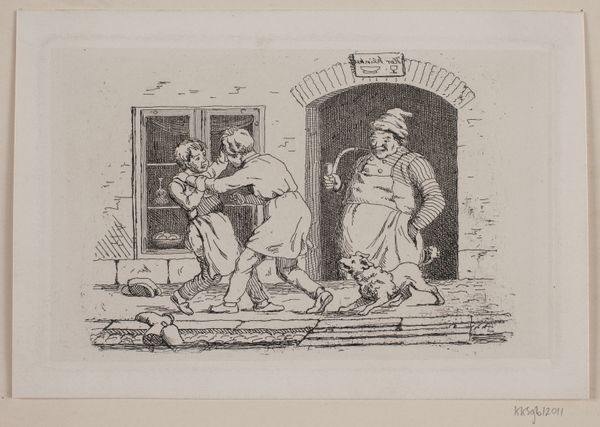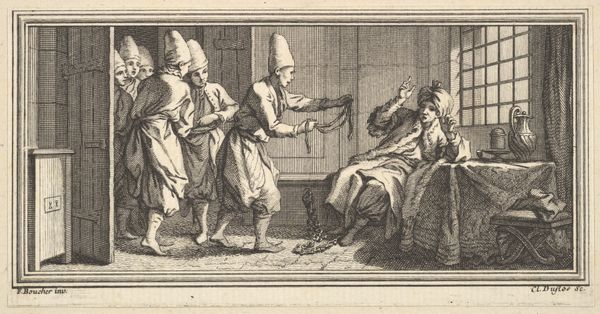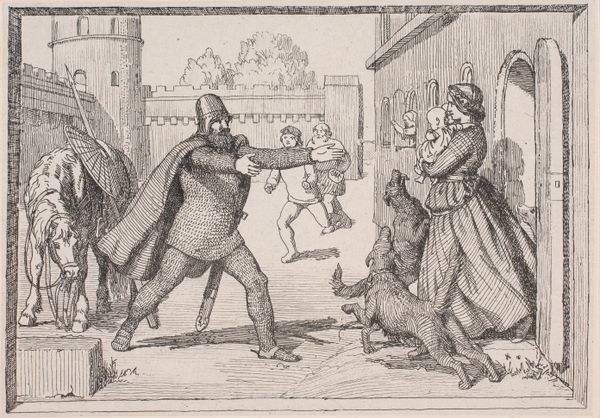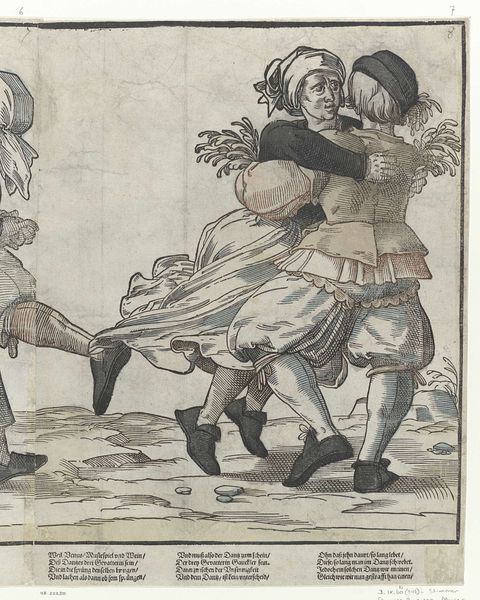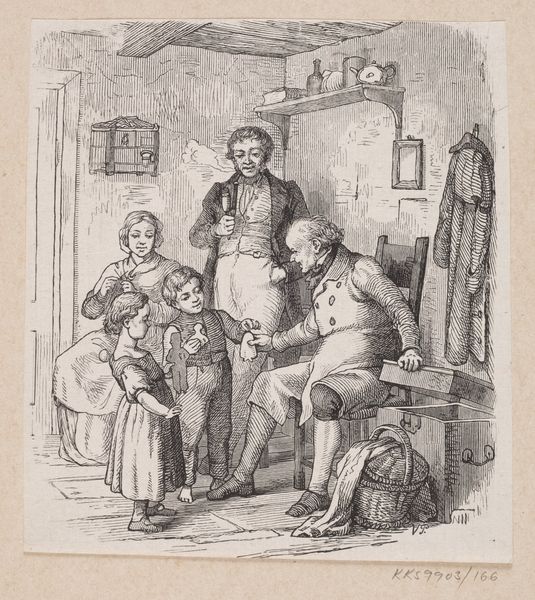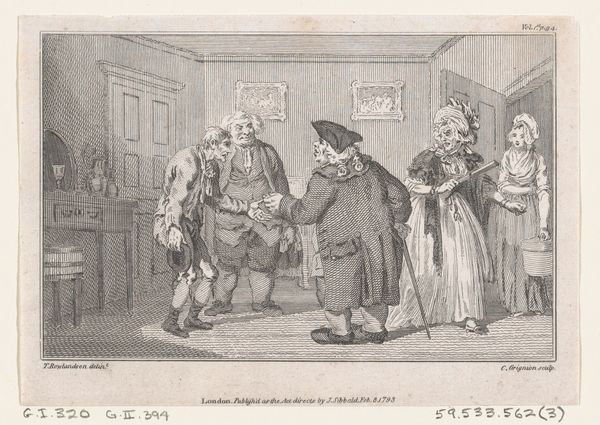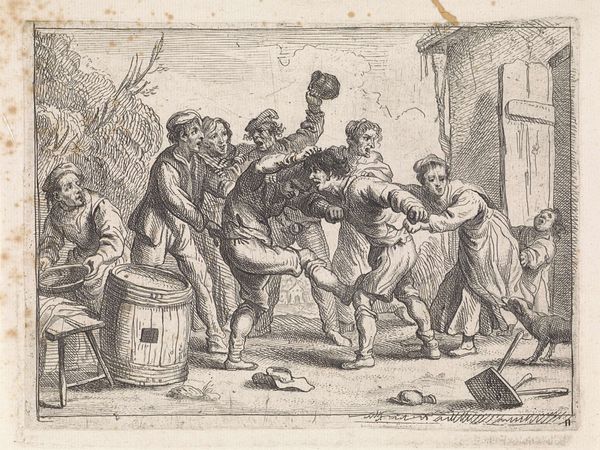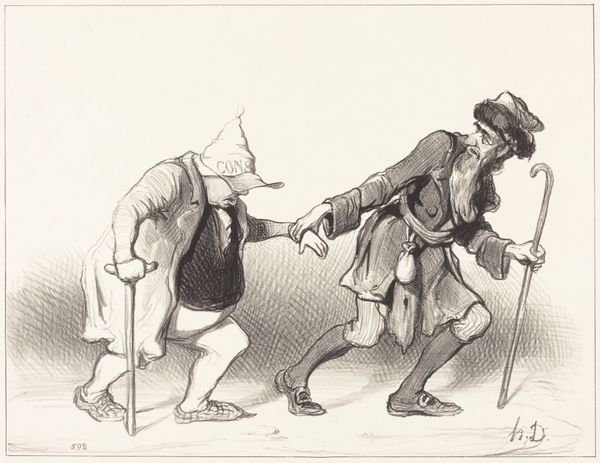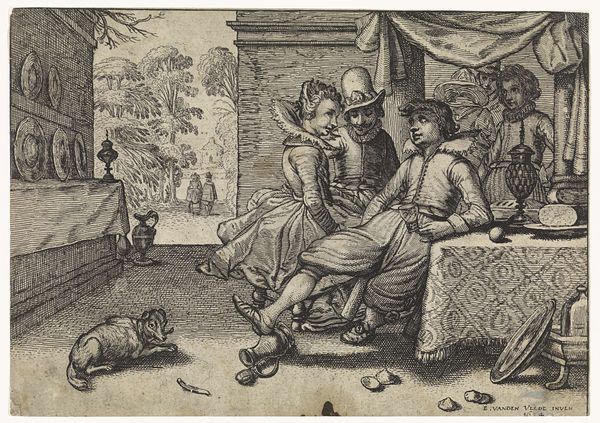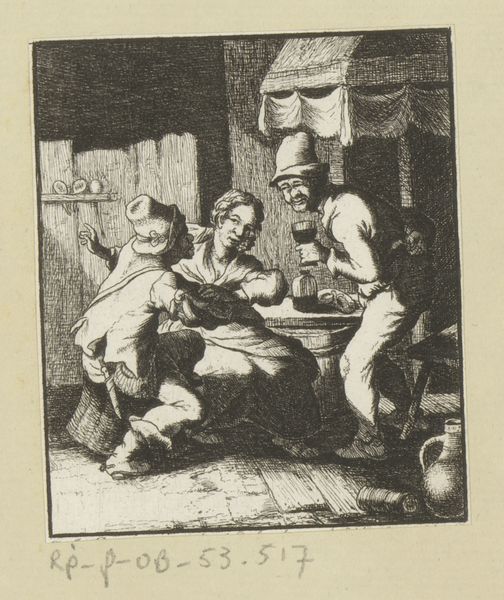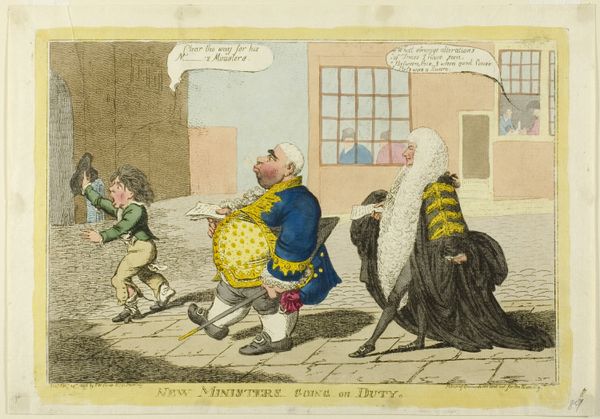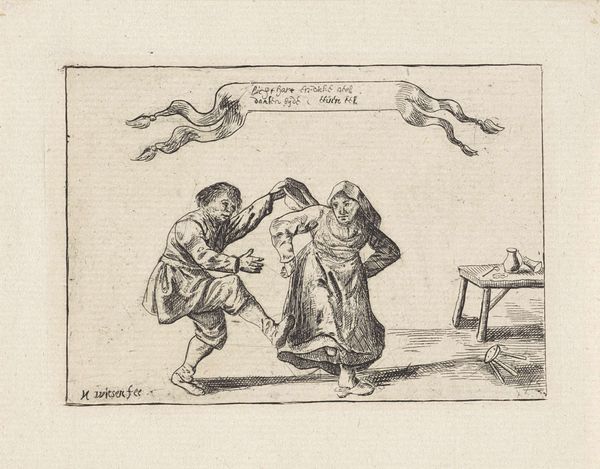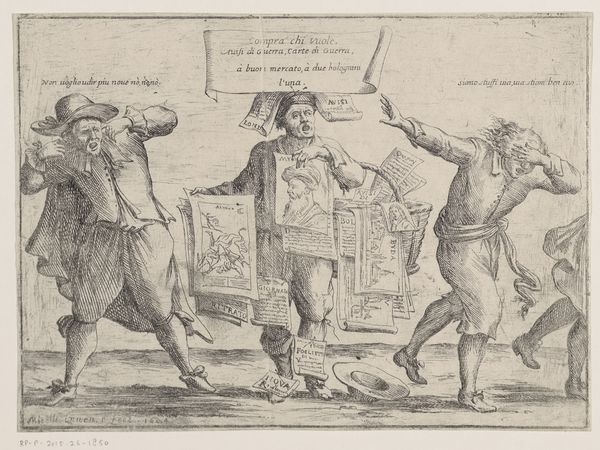
Illustration til Billeder og Vers af Julius Exner og Christian Winther 1862
0:00
0:00
drawing, print, pen
#
drawing
#
narrative-art
# print
#
figuration
#
pen
#
genre-painting
Dimensions: 101 mm (height) x 131 mm (width) (bladmaal)
Curator: Looking at this image, my initial reaction is one of mild amusement tinged with concern. The two boys in the foreground, caught mid-scuffle, seem almost cartoonish, while the adult figure looming nearby strikes a slightly ominous chord. Editor: Well, that "ominous" figure certainly holds visual weight! Here we see Julius Exner’s pen drawing and print, dated 1862, "Illustration til Billeder og Vers af Julius Exner og Christian Winther," housed here at the SMK. Let's dig a bit deeper. I'm drawn to the artist's skillful use of line to create texture and depth in this seemingly straightforward depiction of genre. Curator: Exactly! The print portrays a scene that could easily be found in the streets of 19th-century Copenhagen. Exner, of course, often depicted scenes of everyday life among the peasantry, but the staging here feels deliberate. I wonder about the influence of the art market. Was there a demand for "charming" scenes of working-class life among the bourgeoisie? Editor: The question is whether this reflects reality, or some kind of fantasy… But focus on what stands out. It's the way the artist depicts the brawl - the energetic scribbles rendering the struggle, the contrasts in weight—heavy, scratchy outlines around the adult figure against the thinner, cleaner strokes that define the children. What’s your sense of how this was made and what this suggests? Curator: Certainly, the clear depiction of class differences comes into play, which suggests the distribution of social roles and control, right? Look at that smug expression of the observer with his pipe; the boys can engage in fisticuffs, but in the end, he controls things. He represents institutions… Editor: Institutions rely on specific processes! We need to recognize Exner's engagement with his medium –the meticulous details achieved with the pen. The contrast of textures, for example, the smooth wall versus the rough cobblestones or the frenetic dog, brings attention to both the artistic skill and labor inherent in creating such prints for mass consumption. It really challenges traditional divisions in art, blurring "high art" with common labor and mass-produced materiality. Curator: So, we are brought back to social roles reflected through art making… But, of course, also influencing attitudes and behaviors in public. Editor: Right, these kinds of pieces are important to really unpack a time, in materials and mores. Thanks for providing insights into how society receives such work.
Comments
No comments
Be the first to comment and join the conversation on the ultimate creative platform.
